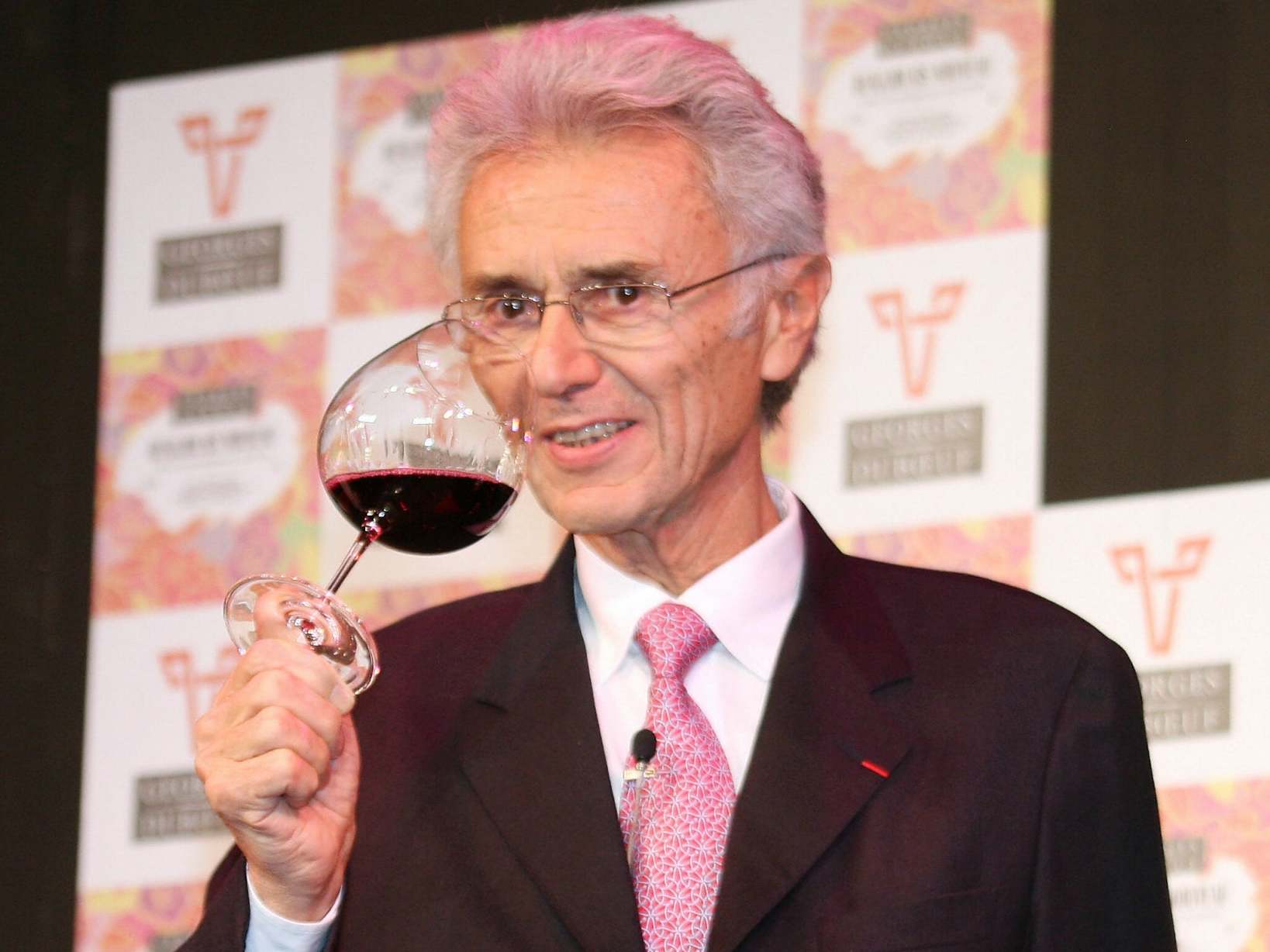Georges Duboeuf: French winemaker who brought beaujolais to the masses
He revolutionised his industry, set a new standard for mass-produced wine and brought fruity reds to millions of drinkers around the world

Your support helps us to tell the story
From reproductive rights to climate change to Big Tech, The Independent is on the ground when the story is developing. Whether it's investigating the financials of Elon Musk's pro-Trump PAC or producing our latest documentary, 'The A Word', which shines a light on the American women fighting for reproductive rights, we know how important it is to parse out the facts from the messaging.
At such a critical moment in US history, we need reporters on the ground. Your donation allows us to keep sending journalists to speak to both sides of the story.
The Independent is trusted by Americans across the entire political spectrum. And unlike many other quality news outlets, we choose not to lock Americans out of our reporting and analysis with paywalls. We believe quality journalism should be available to everyone, paid for by those who can afford it.
Your support makes all the difference.He first sold wine from a bicycle, meeting with chefs and restaurateurs near Lyon while riding across the hills and plains of eastern France, carrying bottles in his saddlebag.
But while striving to uphold four centuries of tradition in his vintner family, Georges Duboeuf, who has died following a stroke aged 86, upended the region’s wine industry, becoming an international symbol for beaujolais as he brought its fruity reds and quaffable nouveau to millions of drinkers around the world.
He lived in the Romaneche-Thorins, eastern France, where his empire of Gamay grapes and floral bottles had grown to include a museum and even an amusement park, a kind of wine Disneyland featuring a model railroad station, “4D” theatre, golf course and tasting room.
Duboeuf was known in France as a negociant, a merchant who assembles the produce of smaller winemakers and sells the results under his own name. His company worked with 400 growers and 20 cooperatives, producing 20 million bottles each year, most of it sold overseas.
He was said to possess both a formidable palate and a well-honed spitting technique, the result of some 15,000 swig-and-spits a year. (By his count, he once tasted 500 wines in a day while testing vintages for his company.) He also had a flair for marketing that made him the face of beaujolais nouveau, a young wine fermented in only a few weeks, if not days, and sold soon after bottling.
The nouveau became an international sensation in the 1980s, when Duboeuf helped to oversee midnight festivities that marked its official release on the third Thursday of November, trumpeted with the slogan “Le beaujolais nouveau est arrive!”
Inspired by winemaker Gerard Canard, whom Duboeuf credited with the idea of creating a “Bastille Day of wine”, the celebrations opened with the fanfare of brass bands and church bells in Romaneche-Thorins, followed by a lighthearted race in which Duboeuf and his peers vied to ship the first bottles of beaujolais nouveau to cities around the world. Some bottles were parachuted into London; others made their way to New York aboard the Concorde supersonic jet.
Duboeuf’s success in popularising beaujolais nouveau irked some critics who frowned upon mass-produced wine. He acknowledged that some of his wines catered to a broad audience, but said: “Beaujolais is made as seriously as any wine, but it is not drunk in the same fashion as the others.”
Indeed, in recent years some Japanese saunas have offered fans a new way to consume the beverage: while soaking in large heated baths of wine, where the water turns a bright purple with the addition of several litres of beaujolais nouveau.
Georges Duboeuf was born in Creches-sur-Saone in 1933, and raised in nearby Chaintre, part of the Pouilly-Fuisse wine region. He learned the wine trade from his uncle and older brother, turning the crank on the grape crusher when he was six and leaving school a decade later to focus on the family business, according to his grandson.
In the 1950s he formed an association of local producers, L’Ecrin Maconnais-Beaujolais, to promote the region’s wines, and called on winemakers to bottle at their own wineries – and eventually his own – instead of shipping wines in bulk.
He also struck up friendships with leading chefs such as Georges Blanc, Paul Bocuse, Jean-Paul Lacombe and Pierre Troisgros, who fuelled the spread of beaujolais by including it on their menus.
Duboeuf opened his museum and amusement park, Hameau Duboeuf, in 1993. “In my lifetime we have moved from wine strictly as a food to wine as a pleasure,” he said. “Wine and wine knowledge have become a new form of culture, and I wanted to create a centre of wine culture and wine communication.”
Although he was long considered the most powerful vintner in Beaujolais, his reputation was shaken somewhat by a fraud conviction in 2006, when he was fined €30,000 (£25,500) after some of his wine was found to have been illegally blended from cheap and high-quality grapes. Duboeuf said that the mixing was unintentional, and that none of the blended wines had reached consumers.
In 2018 he passed his company on to his son, Franck Duboeuf. “Our profession is to invite the greatest number of people possible to share our joy,” Duboeuf once said, “and at the same time to explain the role of the magic of wine – symbol of a dream, bearer of good cheer, of sensitivity, of poetry and romanticism.”
He is survived by his wife, the former Rolande Dudet, and two children.
Georges Duboeuf, wine merchant, born 14 April 1933, died 4 January 2020
© Washington Post
Join our commenting forum
Join thought-provoking conversations, follow other Independent readers and see their replies
Comments